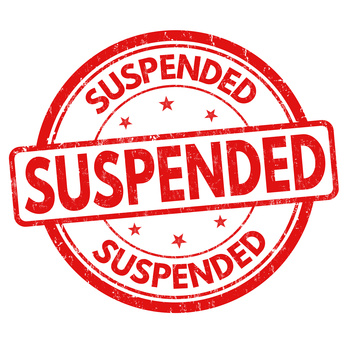Prevent Amazon Seller Suspensions
Amazon: Background and Policies
The Amazon platform is the largest online retailer in the world.
 Sellers are provided with access to 80 million customers. At no time in the history of commerce have people and businesses had this type marketplace access without significant financial backing.
Sellers are provided with access to 80 million customers. At no time in the history of commerce have people and businesses had this type marketplace access without significant financial backing.
If someone has a smartphone and a credit card, they can start selling on the Amazon platform and “compete with the big boys” right away. However, as previously stated, Amazon does have drawbacks for Sellers as well.
First, Amazon’s main focus is on the customers, not Sellers.
Sellers are replaceable.
Large or small, Amazon is incredibly diversified with Sellers that no one account matters to them in the long run. Amazon insists on a practically perfect business model and execution as well. Falling outside a few percentage points of the metrics Amazon requires adherence including customer satisfaction and return rates, can ultimately result in Seller account suspensions.
As part of their dedication to the customer, Amazon has an account suspension program used to enforce their strict policies. This is not necessarily a bad thing, however as hinted to above, some Sellers and even manufacturers use the suspension policy dishonestly to gain a competitive advantage.
Basic Types of Suspensions:
There are two basic types of suspension: listing suspensions and account suspensions.
A listing suspension is when a Seller has been prevented from selling a single product, type of product, or brand of product.
Fortunately, in this situation, the balance of the Seller’s account is still active. They are still permitted to sell other products on Amazon and continue making money. A listing suspension can still be costly without income from the suspended listings, but the business is still open and payments are still able to be processed.
This is, of course, better for the Seller than having their entire account suspended. When Amazon suspends an entire account, not only is the Seller unable to make any sales, but Amazon also withholds the Seller’s funds earned through sales before their suspension.
The Seller gets hit hard twice: they cannot earn any money, and Amazon refuses to release money they have already earned.
There is little predictability as to when Amazon will decide to issue a suspension for policy violations outside the sphere of intellectual property accusations. However, suspensions for “inauthentic,” “used sold as new,” and intellectual property accusations are the most common reasons cited by Sellers for their suspensions.
“Inauthentic” on the Amazon platform does not necessarily mean counterfeit or fake. Here, it refers to whether the product sufficiently matches its listing. Amazon’s focus on the customer aims to ensure that customers are receiving what they expect when they place an order.
Amazon also applies a strict definition to the word “new.” On the Amazon platform, a product that has been returned in its original packaging and sold as “new” is in fact a violation of their policy. Also, products that are not delivered in original manufacturer packaging are not considered new.
Basic Method for Reinstatement of Selling Privileges: The POA
In order to get a listing or account back online, Amazon requires Sellers to submit a Plan of Action (POA).
A POA is essentially a form of persuasive writing. The idea is for the Seller to try and persuade the reader at Amazon to reinstate their listing or account. Amazon places a seventeen (17) day time limit or, Statute of Limitations, on providing a POA.
Basic Format of a POA
There is a basic three section format for drafting a POA:
- Root Cause or Causes of Problem
- Immediate Corrective Actions
- Long Term Business Changes to Prevent the Problem from Re-Occurring
The “root causes” of the issues that resulted in the suspension are basically what can be identified as the reason for the customer’s, Amazon’s, a competitor’s, or a rights owner’s complaint. Sellers are required to figure out their own root cause. Amazon does not always share the real underlying issue with the account.
The “immediate corrective action” section refers to what the Seller already did to remedy their particular issue. Maybe they refunded the customer and sent them another product for free or maybe you hired staff to help with the issue. Amazon wants to ensure the Seller has provided an immediate fix to make that customer or that experience better.
The “long-term changes” or systemic changes refer to the alterations to the entire operation that the Seller made or is in the process of making, that will prevent similar issues in the future.
Drafting a POA that responds to a copyright (or other intellectual property) allegation is impossible for the average Seller who does not understand the law. A baseless complaint can force a Seller to hire an attorney to assist in the process.
Copyright and Intellectual Property on Amazon
Pursuant to the DMCA notice requirements, Amazon provides a digital form to report infringement on its website.
Amazon requires the complainant to provide whether they are the rights owner or an agent of the owner, what type of complaint is being made, the name of the brand, contact information, and the Amazon Standard Identification Number (ASIN), of each product being reported.
In addition, there is a “click-wrap” agreement for the complainant to verify that “[they] have a good faith belief that the content(s) described [in the complaint] violate(s) [the] rights described above or those held by the rights owner, and that the use of such content(s) is contrary to law. [they] declare, under penalty of perjury, that the information contained in this notification is correct and accurate and that [they are] the owner or agent of the owner of the rights described above.”
Upon receiving an intellectual property complaint, Amazon will suspend the account of the accused violator pursuant to the DMCA’s notice and takedown procedures for “respond[ing] expeditiously to remove, or disable access to, the allegedly infringing material or activity.”
The problem, as previously stated, is that Sellers and manufacturers alike are aware of this procedure. There has recently been an increase in Amazon complaints regarding intellectual property, and copyrights specifically because manufacturers and larger brand name companies have been filing complaints against other Seller’s accounts. They are angered by “mom and pop” Sellers who are able to source and offer the same products at a cheaper price.
Further, on the Amazon platform, multiple third-party Sellers are permitted to sell the same items. When an item goes up for sale for the first time on Amazon, let’s say it is a pair of Nike sneakers, the product listing page becomes part of Amazon’s “catalog” so to speak.
Other Sellers who wish to sell the exact same product can then offer their product on the same listing page. Whichever Seller has the best price is linked to the “buy-box” or area in which a user “clicks” in order to purchase the product.
When a Seller gets the buy-box on the Amazon platform it is usually a guarantee they will be the most successful Seller of that product. Thus, many baseless intellectual property complaints are also filed by competing Sellers looking to “hijack” another Seller’s listing by filing a baseless complaint in order to “win the buy-box.”
Plan of Action: Appealing a Copyright Infringement Suspension
The POA requirements are different when a Seller on the Amazon platform is suspended for an allegation of copyright infringement. First, instead of writing a POA and sending it to Amazon, the Seller is required to contact the Seller or manufacturer rights owner who has made the allegation against their account.
In order for Amazon to reinstate the account of the accused, they require the complainant to agree to rescind their complaint. The complaining party then must send an e-mail to Amazon, from the same e-mail address that sent in the complaint, that the issue was resolved and they are willing to withdraw their complaint. The suspended Seller finally needs to send their POA to Amazon with a copy of the complainant’s e-mail rescinding the complaint attached.
Sometimes the complainant will agree that they made a mistake and will acquiesce to the removal of their complaint, but the same cannot be said when copyright bullying is occurring. These types of complainants are usually willing to go as far as threatening litigation in order to intimidate other Sellers. If a complainant refuses to withdraw their complaint it is nearly certain that Amazon will not reinstate the account of the accused unless it can be proven that some mistake was made on Amazon’s end like shipping the wrong item on a Seller’s behalf.
Regardless of the scenario, it is unjust to allow Sellers privileges to be suspended and result in lost profits whether an honest mistake or baseless complaint is made. Multibillion dollar platforms like Amazon have the financial and technological resources to monitor infringement more accurately without facing an undue burden.
Prevent Amazon Seller Suspensions
The reality of copyright bullying on the Amazon platform is that the victims typically not only need to hire an attorney, but are also left unable to access their funds or conduct business on the Amazon platform. Some Sellers make their living on the Amazon platform and a suspension for some can mean hundreds of thousands of dollars are on the line.
The remainder of this note will outline suggestions for amending the portions of the DMCA outlined above in order to combat copyright bullying on the Amazon platform. The suggested changes to the law aim to allow e-commerce platforms like Amazon to implement procedures for assessing the validity of copyright (as well as other intellectual property) complaints as well as requiring those platforms to adhere to stricter notice standards in order to prevent Amazon Seller suspensions.

